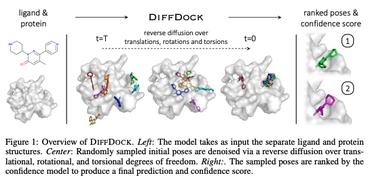Multibody molecular docking on a quantum annealer
Molecular docking, which aims to find the most stable interacting configuration of a set of molecules, is of critical importance to drug discovery. Although a considerable number of classical algorithms have been developed to carry out molecular docking, most focus on the limiting case of docking two molecules. Since the number of possible configurations of N molecules is exponential in N, those exceptions which permit docking of more than two molecules scale poorly, requiring exponential resources to find high-quality solutions. Here, we introduce a one-hot encoded quadratic unconstrained binary optimization formulation (QUBO) of the multibody molecular docking problem, which is suitable for solution by quantum annealer. Our approach involves a classical pre-computation of pairwise interactions, which scales only quadratically in the number of bodies while permitting well-vetted scoring functions like the Rosetta REF2015 energy function to be used. In a second step, we use the quantum annealer to sample low-energy docked configurations efficiently, considering all possible docked configurations simultaneously through quantum superposition. We show that we are able to minimize the time needed to find diverse low-energy docked configurations by tuning the strength of the penalty used to enforce the one-hot encoding, demonstrating a 3-4 fold improvement in solution quality and diversity over performance achieved with conventional penalty strengths. By mapping the configurational search to a form compatible with current- and future-generation quantum annealers, this work provides an alternative means of solving multibody docking problems that may prove to have performance advantages for large problems, potentially circumventing the exponential scaling of classical approaches and permitting a much more efficient solution to a problem central to drug discovery and validation pipelines.
PDF Abstract

